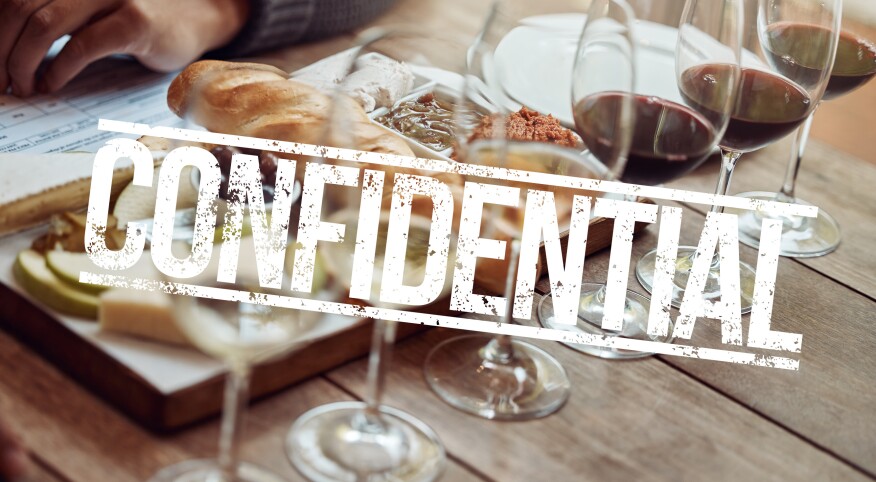Every industry has its secrets and hidden agendas, and the wine business is no exception. After all, wineries are in the business of moving product, and all is fair in love, war and wine sales. Being aware and knowing what to watch for will help make you a savvier consumer.
1. Wine competitions award hundreds of medals
All that glitters is not gold. When you see a gold medal on a bottle, don’t assume that the wine won the competition. I’ve been a judge at several international wine competitions, where every one of the hundreds of wines tasted is scored on a scale of “no medal,” bronze, silver or gold. Literally hundreds of medals can be awarded, and every winery that’s awarded a medal is entitled to put a medal sticker from that competition on their bottle.
Work-around
If you’re going to rely on medals, choose one that says “Best of Show” or “Best of Class.” These accolades are awarded only to the wines that come out on top after all the gold-medal wines of the competition are judged against each other.
2. Price doesn’t always equate to quality
Gaga reviews in magazines like Wine Spectator can drive the price of a wine well beyond its fair market value — as will plain old-fashioned supply and demand. In my travels, I’ve even been privy to conversations revealing that wineries occasionally inflate their prices as a marketing ploy, perhaps egged on by research indicating that “the same wine tastes better to participants when it is labeled with a higher price tag.”
Work-around
Ignore the hype and search for a similar wine with an inferior publicist. And stay away from so-called cult wines — unless, of course, someone else is buying.
3. Vineyard location can be overrated
If a salesperson tries to convince you that an inexpensive wine is an “insider secret” because the property is located in a famous wine region or next door to a celebrated winery, taste it before you hand over your credit card. Sure, the similar soil and climate can elevate the quality of the inexpensive bottle, but wineries that command high prices for their wines have the luxury of investing in every stage of the winemaking process (reduced yields that result in more concentrated wines, higher-quality barrels that help create structure, longer aging times that allow the wines to evolve, etc.), all of which can collectively turn one row of grapes into something exceptional, while the adjacent row on the property next door could end up in a bottle of Two-Buck Chuck.
Work-around
Of all the variables in the winemaking process, the one I’m most willing to bet the house on is the winemaker. Many celebrated winemakers make wine for several wineries and often bottle their own wines as a side hustle. Heard of or tasted a fancy wine that impressed you? Google the name of the wine plus “winemaker” to find the winemaker, then google “wines [the winemaker] makes” and search for the least expensive one. Chances are it will be a winner.
4. You are the fish in the (wine tasting room) barrel
Ever wonder why wine tastes better at a winery tasting room? Beyond the festive atmosphere and gregarious staff lies an insider secret that can be summed up by an industry axiom: “Buy on bread, sell on cheese.” The expression is quite literal. If you are a professional wine buyer, you don’t want anything to interfere with your judgment when you are sampling wines, so you cleanse your palate with bread. Conversely, anyone running a tasting room designed to sell wine knows that the fattiness and proteins in cheese (and charcuterie) will enhance the flavors of most wines and knock back any astringent tannins, making their wines appear more luscious and desirable than they may actually be. That’s why cheese plates are ubiquitous in tasting rooms.
Work-around
Just say no. Stay focused, and don’t let food, environment or sexy servers interfere with your judgment.
5. The colder the wine, the less obvious the flaws
White wines and rosés are typically served chilled (approximately 45°F to 50°F, although the optimum temperature is open to debate). When a wine is served very cold, the extra chill masks its flaws. At wine competitions, judges taste white wines and rosés at room temperature so that the flavors — and potential imperfections — are accentuated.
Work-around
The next time someone tries to sell you on an ice-cold glass of wine, cup the glass in your hands and swirl the wine around until your body heat takes away the chill. After a couple minutes, taste the wine and you’ll see how much easier it is to assess its characteristics, both good and bad.

Getty Images; Shutterstock




